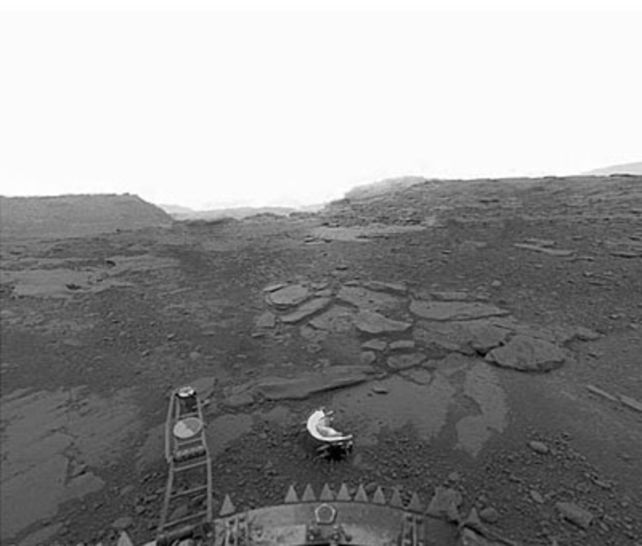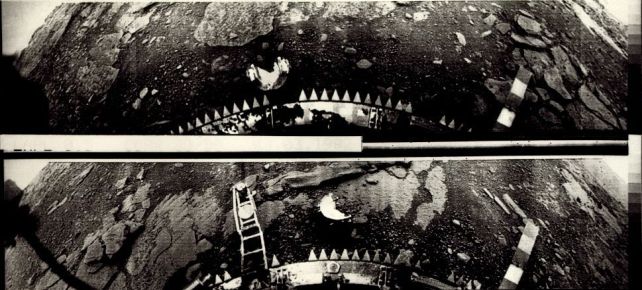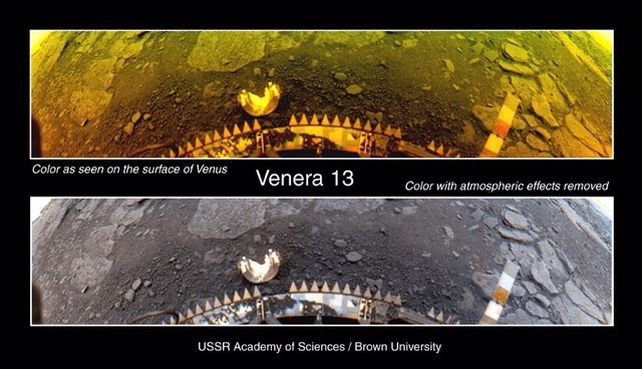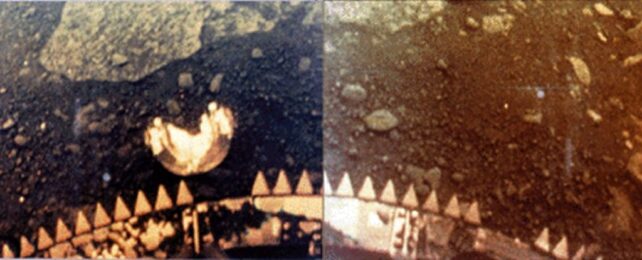Venus is so tantalizingly close to being a twin of Earth. Its size, composition, and density are so similar to the properties of our homeworld… but when it comes to habitability, Venus couldn't be more different.
Wrapped in a dense, choking shroud of toxic, acidic clouds, the surface of Venus is hostile, and not just to life.
Thanks to a runaway greenhouse effect, in which those clouds trap the heat of the Sun and prevent it escaping back into space, Venus' average surface temperature sits at a horrifying 464 degrees Celsius (867 degrees Fahrenheit). Not to mention the atmospheric pressure – nearly 100 times that of Earth's.
Scientists have struggled to devise a lander that could survive these deeply inhospitable conditions… but, believe it or not, we do actually have data from the Venusian surface. Between 1961 and 1984, the Soviet space program sent a series of 16 probes to Earth's sunside neighbor.

The program was called Venera, and it was, in no uncertain terms, a triumph. It was the first program to successfully enter the atmosphere of another planet, with Venera 3 in 1966. In 1970, Venera 7 was the first probe to make a soft landing on another planet.
And, although none of the eight Venera probes that landed on Venus lasted more than two hours – the longest was Venera 12, which lasted 110 minutes before succumbing to the heat and pressure – Venera was the first mission to send to Earth images and sounds from another planet.

To date, Venera is the only program to have sent images and audio from the surface of Venus. Venera 13 and 14 recorded sound, and Venera 9, 10, 13, and 14 took panoramic images of their landing sites.
The data that came in is, by today's standards, perhaps a bit grainy, but it was decades ago, and the conditions under which the probes operated were very stressful. Below, the first images, from Venera 9 and 10 can be seen, taken in 1975, and Venera 13, in 1982.

You can see a significant difference in image quality between the two timeframes, even though they were separated by just a few years.

In more recent times, others have revisited the nearly 50-year-old data with the improved image processing technology and techniques available to us, resulting in some pretty interesting pictures of Venus.
They show a golden-hued, alien world, one that somehow just looks forbidding, even without a hint of the temperature, pressure, or poison that would devastate life as we know it.
That golden hue is a result of sunlight filtering through the Venusian clouds, tinting the surface. Image processing performed at Brown University reveals that the rocks and dirt on the planet's surface have a dark grayish hue.
This is thought to be because of the way that surface formed: Venus's surface is dominated by volcanic features – in fact, it may still be volcanically active today – and the dark rock is thought to be basaltic.

Because of the ways in which Venus is similar to Earth, scientists are keen to learn more about it. Studying Venus could help us learn some of the ways in which planets' evolutionary paths can deviate, to produce an environment that is conducive to life, or one that is very extremely not.
This is information that we can use to search for life elsewhere in the Milky Way galaxy, and answer some of humanity's most fundamental questions: how did we get here, and why?
Although our technology has improved since the days of Venera, we're yet to send another probe to Venus. Several upcoming missions from space agencies around the globe plan to study the planet's atmosphere. Roscosmos is the only agency with current plans to send a lander to the surface.
So for now, we're just kind of stuck in Venus limbo – staring at decades-old images, wondering what secrets hide within that strange, alien landscape.
